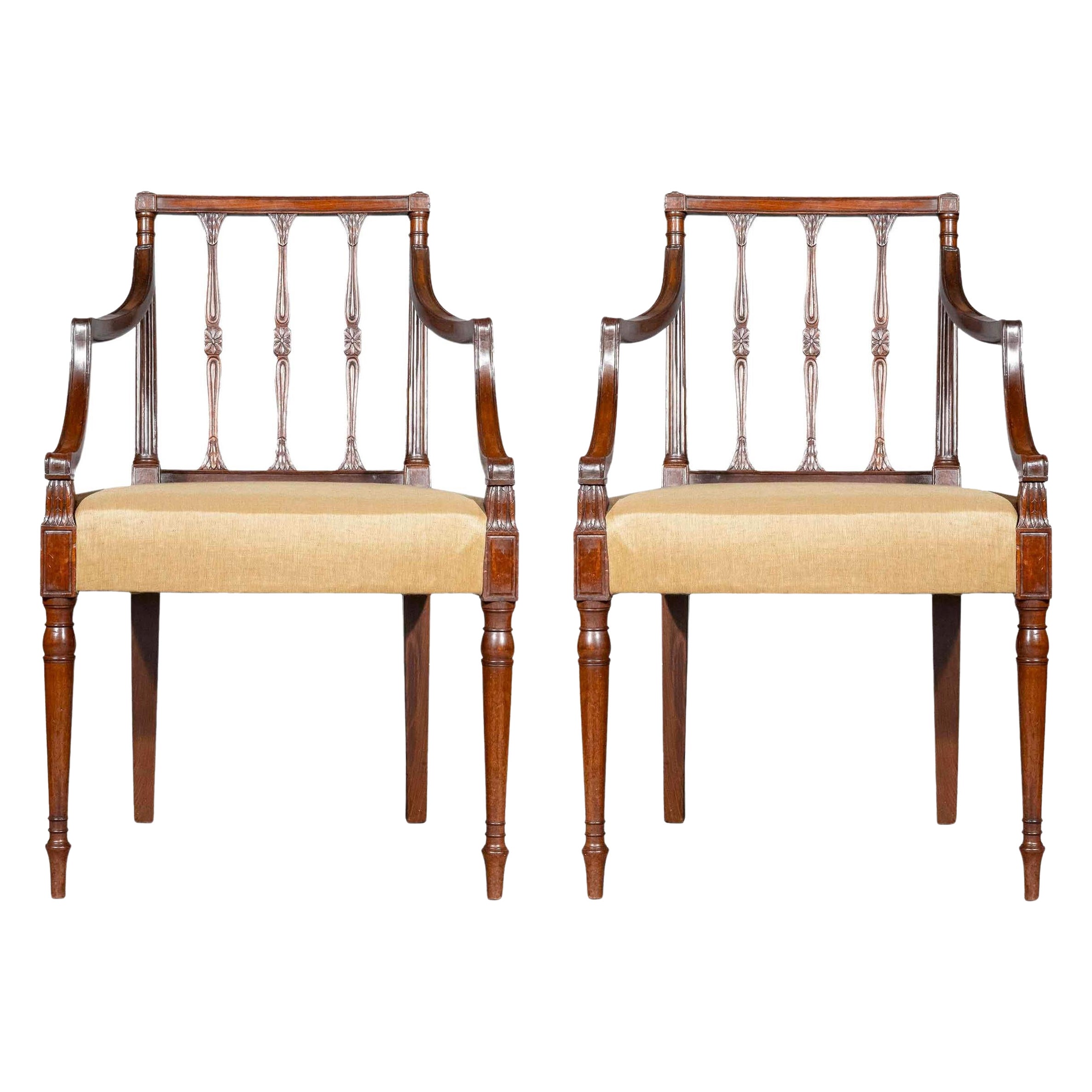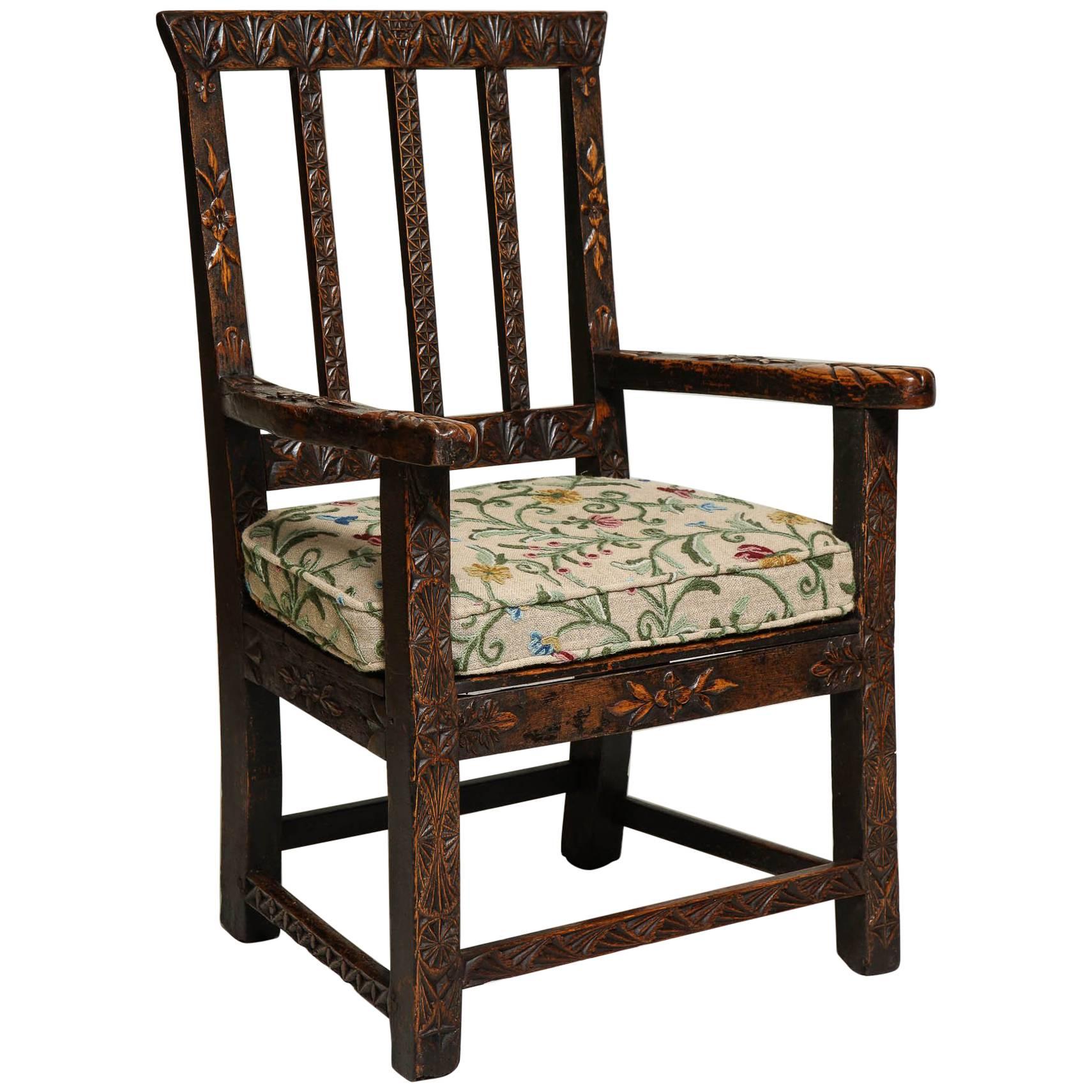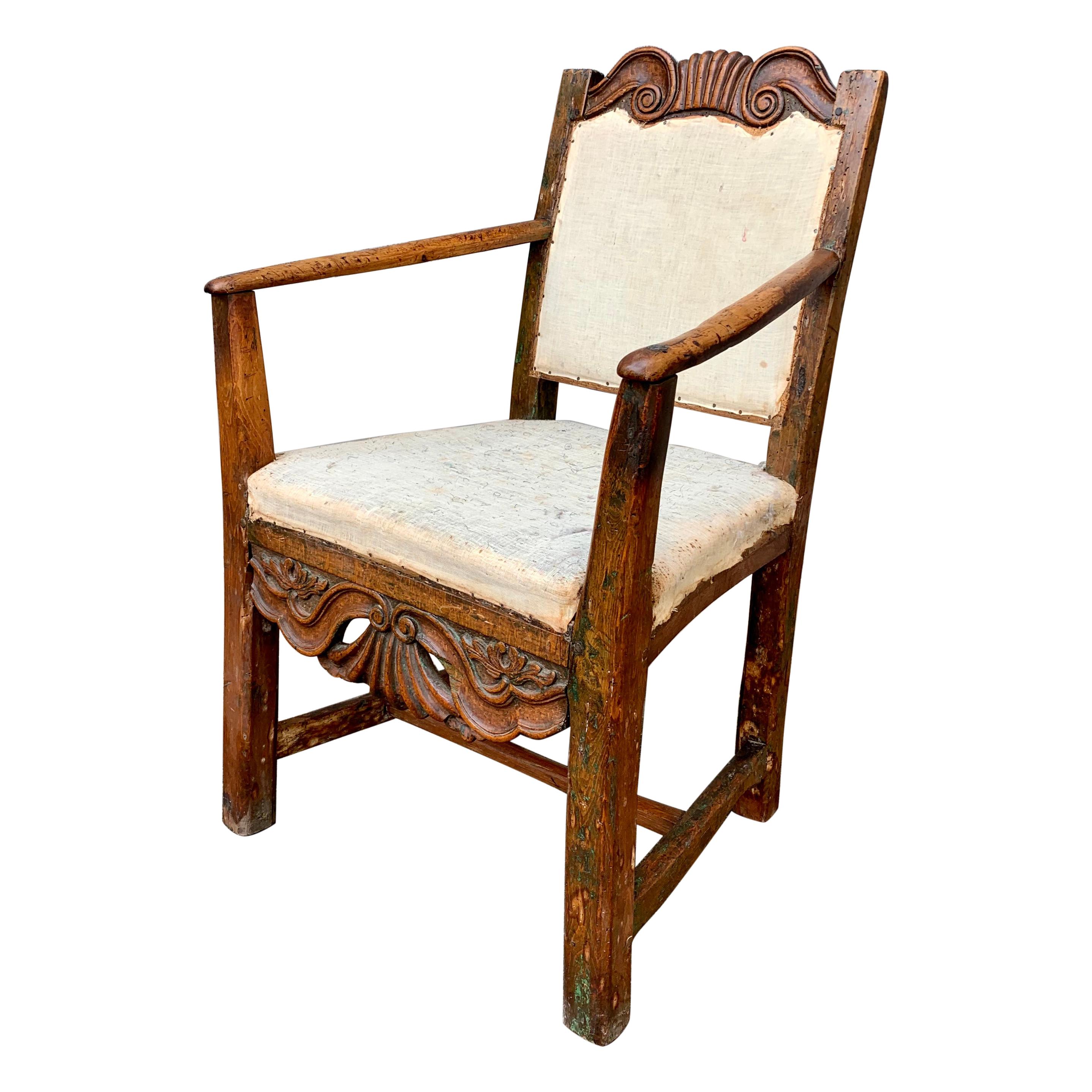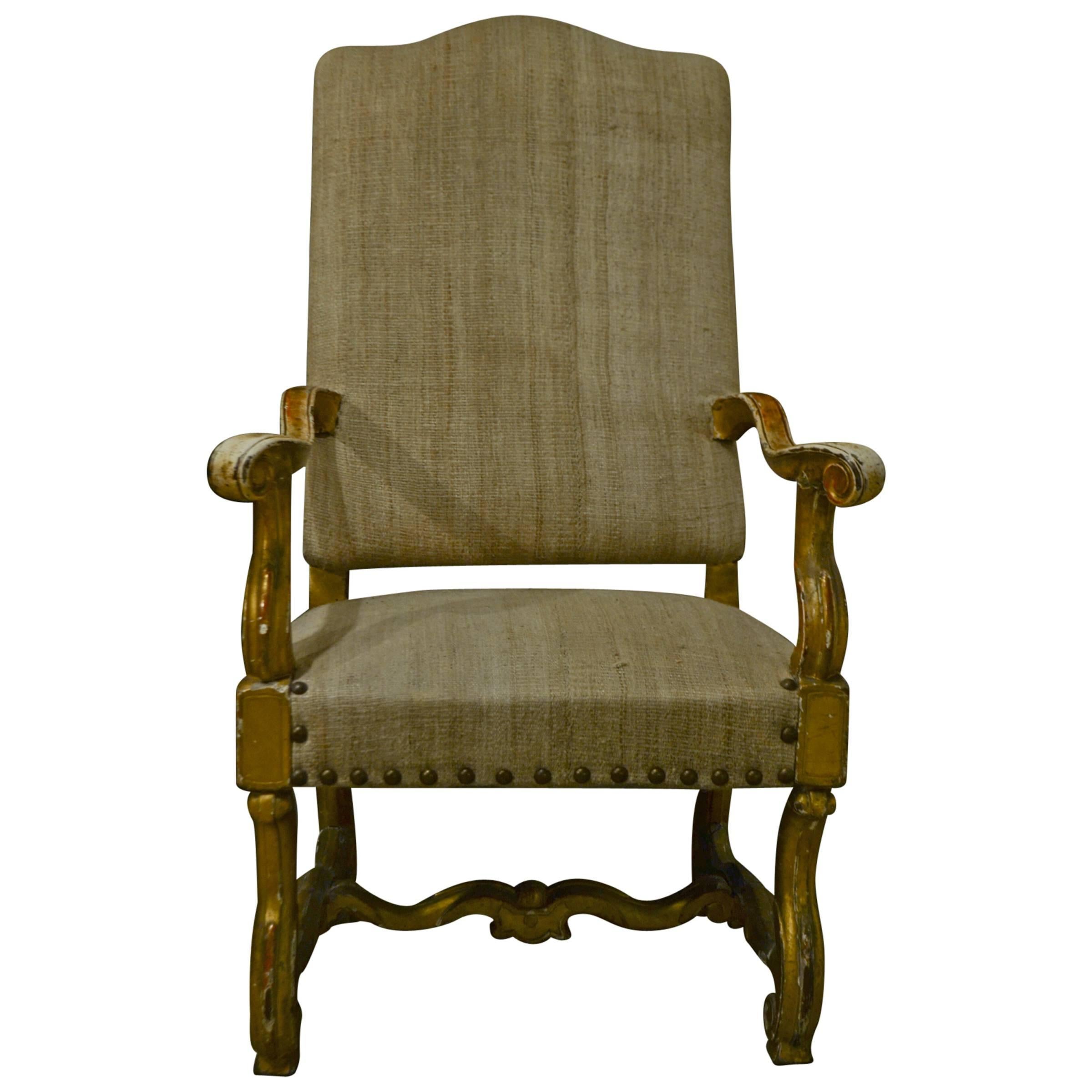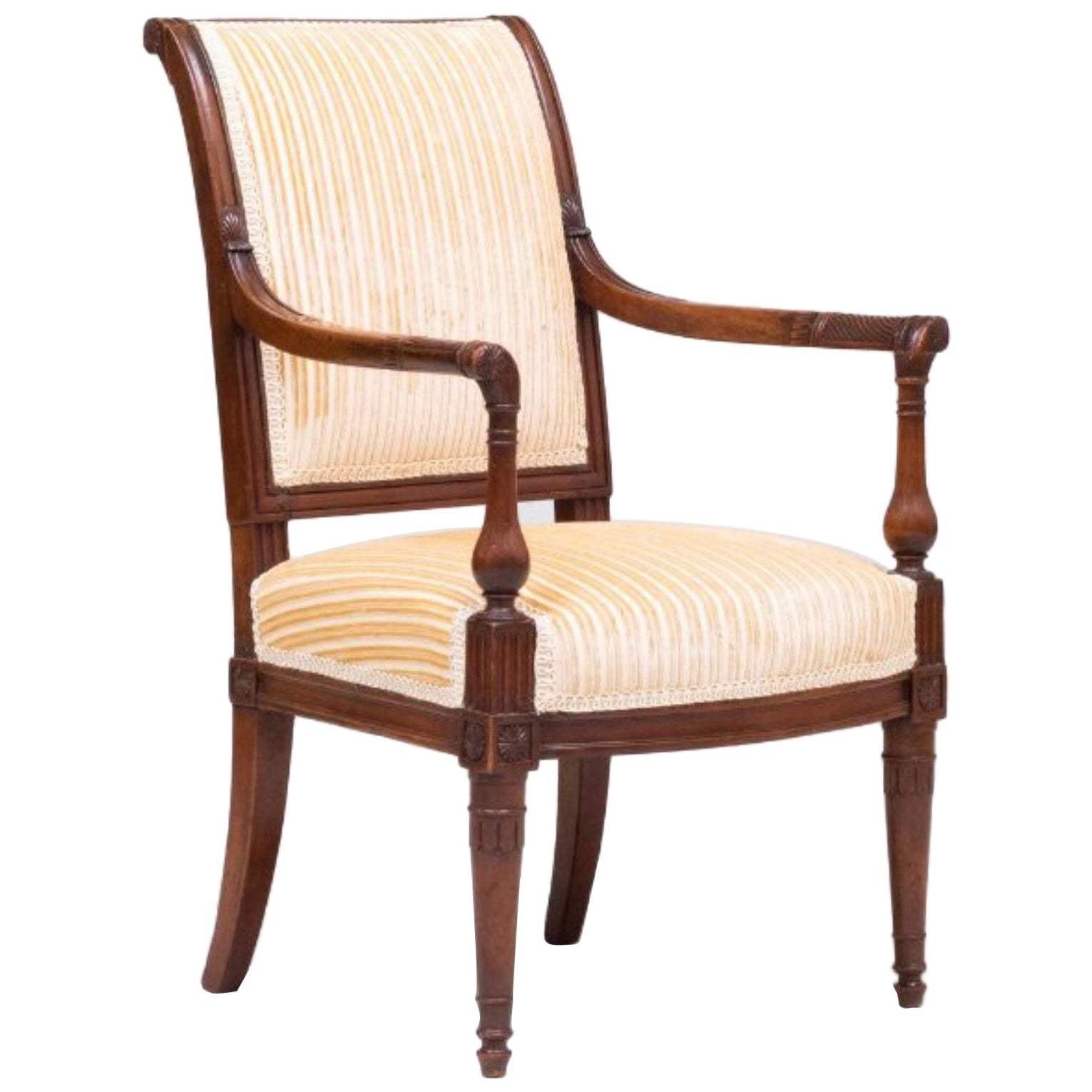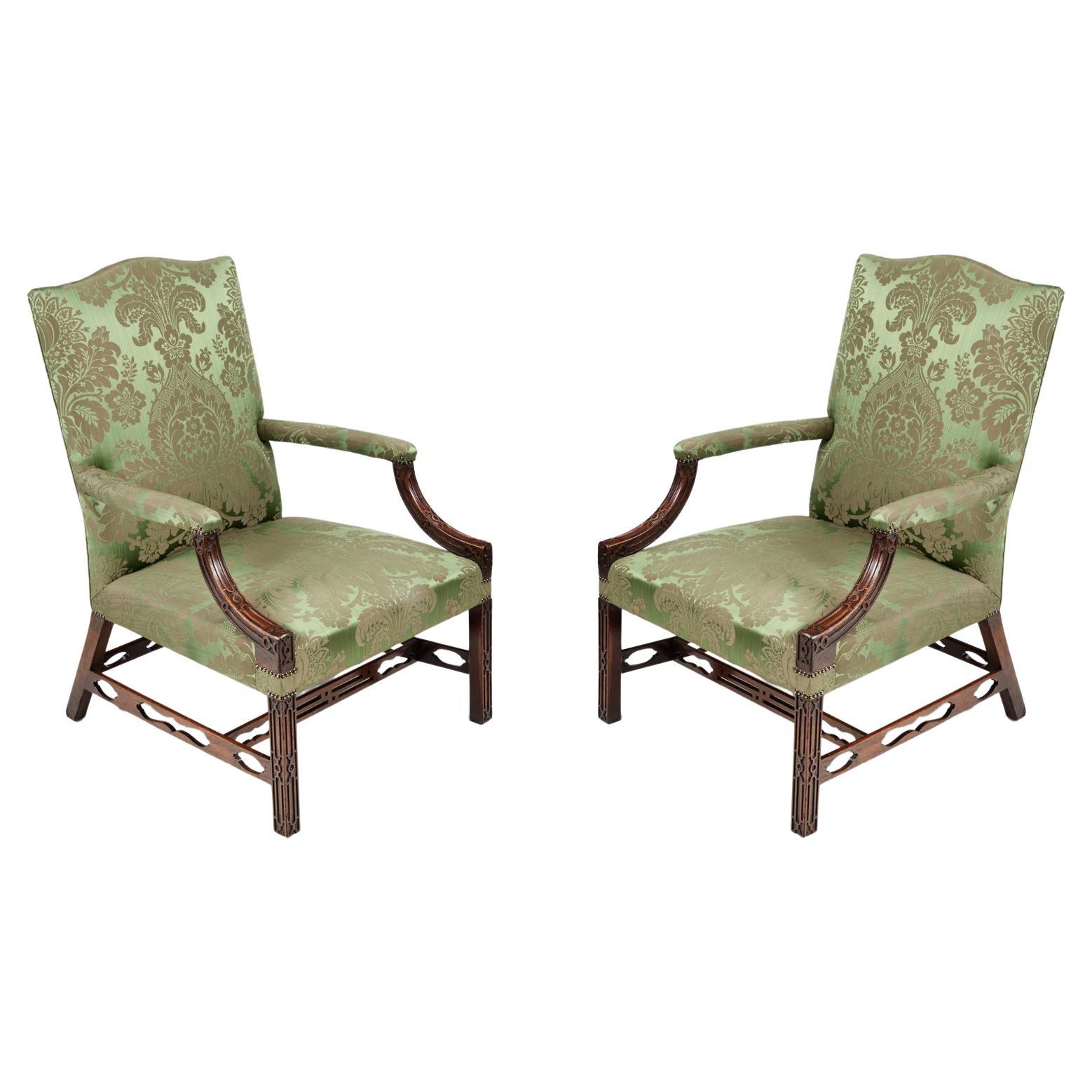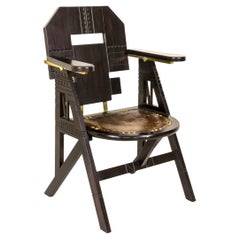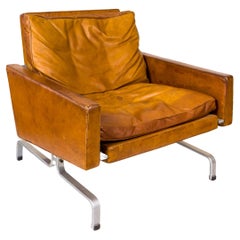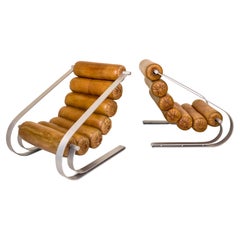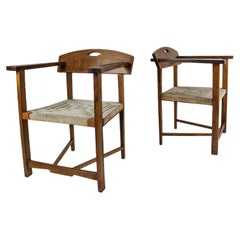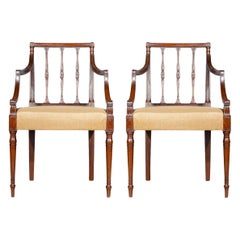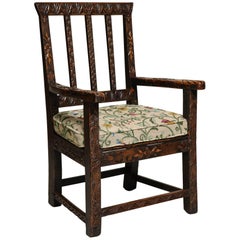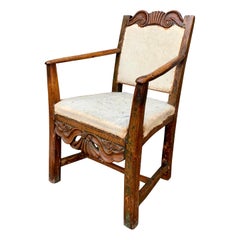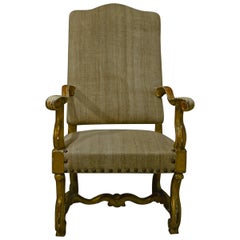Articoli simili a Late 18th Century Irish Folk Art Armchair, Circa 1780, Ireland
Vuoi altre immagini o video?
Richiedi altre immagini o video al venditore
1 di 10
Late 18th Century Irish Folk Art Armchair, Circa 1780, Ireland
Informazioni sull’articolo
DESCRIPTION: Late 18th Century Irish Folk Art Armchair, Circa 1780, Ireland.
Very decorative piece made with oak.
CONDITION: Good condition. Wear consistent with age and use.
DIMENSIONS: Height: 90cm (35.5in) Width: 65cm (25.5in) Depth: 46cm (18in) Seat Height: 44cm (17in)
ABOUT THE STYLE: The chair, as furniture, is probably the oldest of all types of furniture found in Ireland. One of the earliest types of seating found in any rural home was the ‘creepie’; a roughly made stool often consisting of a log raised off the floor. Throughout the Irish Country Furniture exhibition there are many styles of stools and chairs on display, including súgán (rope) chairs and straw armchairs.
Other types of Irish chairs include the ladder-back kitchen chair, the country carpenter’s chair, the Windsor chair and various designs named after their localities, such as the Sligo and Leitrim chairs.
The average rural home commonly had wooden furniture such as chairs, a dresser, a settlebed and perhaps storage furniture such as a mealbin and a food press in the kitchen or hearth area. A bed would also be built into the outshot of the house.
Depending on the wealth of the household, there may also have been furniture such as a corner cupboard and a dowry chest (or bride’s box); a storage chest designed to hold linen, blankets and personal belongings.
The Irish vernacular furniture tradition was heavily influenced by English and Welsh vernacular furniture, which was already well established, and there are many similarities between the furniture styles.
Other influences include the styles of the furniture of wealthy houses, which were often adapted by local craftsmen for the country home. This can also be seen in the imitation of expensive grained woods with methods such as painting and ‘scumbling’, where a stain is applied on a light base coat, and drawn off with a graining comb.
Regional variations in styles of furniture can also betray their influences. A heavy three-legged seat of oak and ash made in the mid-19th centry in Co. Mayo is displayed in the Irish Country Furniture gallery; it is a type of chair found only in Connaught and it has been suggested that it was introduced to the province by Scottish settlers.
Also on display is an 18th century kitchen chair with a boarded seat and finely turned spindles from Co. Down; it is an unusual type of chair in Ireland and was probably influenced by English chairmaking design. A common feature of dressers from northern counties is their simple design and subdued decoration, possibly due to Scottish influence.
However, one of the biggest influences on the design of Irish traditional furniture was the characteristics of the house itself; items, such as the outshot bed and built-in cupboards and dressers, were built specifically to suit the space it was to occupy, or designed to be multi-functional and therefore save space, such as the settlebed.
The vernacular furniture tradition in Ireland developed much later than in England and Wales. The poverty and destruction brought by the wars of the 17th century meant that furniture was not common in rural Irish homes in this period.
However, the late 18th & early 19th centuries saw an increase in the wealth of sections of the peasantry, which, along with an increase in the number of skilled craftsmen and the supply of cheap, imported pine, led to furniture becoming available to more of the rural population.
Local carpenters, joiners and wheelwrights were the main makers of wooden furniture. In addition, many basketmakers made items of furniture such as chairs and child’s cradles using wicker rods until the early years of the twentieth century.
- Dimensioni:Altezza: 91,44 cm (36 in)Larghezza: 66,04 cm (26 in)Profondità: 45,72 cm (18 in)Altezza della seduta: 43,18 cm (17 in)
- Stile:Arte popolare (Del periodo)
- Materiali e tecniche:
- Luogo di origine:
- Periodo:
- Data di produzione:1780's
- Condizioni:Usura compatibile con l’età e l’utilizzo. Good Vintage Condition.
- Località del venditore:Girona, ES
- Numero di riferimento:1stDibs: LU952641426232
Informazioni sul venditore
5,0
Venditore professionale selezionato
Ogni venditore supera rigorosi standard di autenticità e affidabilità
Fondazione nel 1988
Venditore 1stDibs dal 2012
215 vendite su 1stDibs
Tempo di risposta standard: 6 ore
Associazioni
20th Century Specialists
- SpedizioneRecupero del preventivo…Spedizione da: Girona, Spagna
- Politica di reso
Alcune parti di questa pagina sono state tradotte automaticamente. 1stDibs non può garantire che le traduzioni siano corrette. L’inglese è la lingua predefinita del sito.
Garanzia di autenticità
Nell’improbabile caso in cui si verifichi un problema con l’autenticità di un articolo, contattaci entro un anno per ottenere un rimborso completo. DettagliGaranzia di rimborso
Se il tuo articolo non corrisponde alla descrizione, è danneggiato durante il trasporto o non arriva, contattaci entro 7 giorni per un rimborso completo. DettagliAnnullamento entro 24 ore
Hai un periodo di tolleranza di 24 ore per annullare il tuo acquisto, senza necessità di fornire spiegazioni.Venditori professionali selezionati
I nostri venditori di livello internazionale devono aderire a rigorosi standard di servizio e qualità, garantendo l’integrità delle inserzioni.Garanzia miglior prezzo
Se scopri che un venditore ha pubblicato altrove lo stesso articolo a un prezzo più basso, applicheremo lo stesso prezzo.Consegna globale affidabile
La nostra rete di vettori leader del settore offre opzioni di spedizione specializzate in tutto il mondo, inclusa la consegna personalizzata.Altro da questo venditore
Mostra tuttoBelgio Poltrona ART DECO, CIRCA 1920 Belgio
DESCRIZIONE: POLTRONA ART DECO BELGA, CIRCA 1920 Belgio. Un pezzo molto decorativo realizzato in quercia ebanizzata, dettagli in ottone, seduta in pelle originale e motivi africani/c...
Categoria
Inizio XX secolo, Belga, Art Déco, Poltrone
Materiali
Ottone
Poltrona Poul Kjaerholm di metà secolo "PK-31", 1950 circa, Danimarca
Di Poul Kjærholm, E. Kold Christensen
DESCRIZIONE: Poltrona Poul Kjaerholm di metà secolo "PK-31", 1950 circa, Danimarca. Pezzo molto decorativo realizzato in pelle e acciaio.
CONDIZIONE: buone condizioni vintage. Usur...
Categoria
Metà XX secolo, Danese, Mid-Century moderno, Poltrone
Materiali
Acciaio, Cromo
Coppia di poltrone di metà secolo di Marzio Cecchi, circa 1968, Italia
Di Marzio Cecchi
DESCRIZIONE: Coppia di poltrone Marzio Cecchi, realizzate nel 1968 in Italia. Pelle originale in condizioni vintage. La seduta ha un design elegante, composto da cuscini di forma cil...
Categoria
Metà XX secolo, Italiano, Mid-Century moderno, Poltrone
Materiali
Acciaio
Coppia di poltrone, 1920 circa, Inghilterra
Coppia di poltrone,
Molto decorativo.
Realizzato con Oak e corda
Circa 1920, Inghilterra.
Condizioni vintage molto buone.
Categoria
Metà XX secolo, Inglese, Mid-Century moderno, Poltrone
Materiali
Corda, Quercia
6.500 USD / set
Coppia di poltrone Andre Sornay, 1960 circa, Francia
Di Andre Sornay
Coppia di poltrone Andre Sornay.
Questa poltrona riscalderà i tuoi interni con il colore del suo legno, un pezzo perfetto per un interno di tipo chalet.
Realizzato in pino.
Circa ...
Categoria
Metà XX secolo, Francese, Mid-Century moderno, Poltrone
Materiali
Pino
6.500 USD / set
Poltrona "Heart" di Arts and Crafts, Cotswold School, circa 1920, Inghilterra
Di Liberty & Co.
DESCRIZIONE: Poltrona "Cuore" Arts and Crafts, Cotswold School, 1920 circa, Inghilterra
Oak massiccio, gambe dritte, braccioli curvi, sedile originale, segno del cuore sullo schienal...
Categoria
Inizio XX secolo, Inglese, Arts and Crafts, Poltrone
Materiali
Quercia
Ti potrebbe interessare anche
Poltrone di Giorgio III del XVIII secolo, circa 1780
Di Thomas Sheraton
Una coppia estremamente elegante e rara di poltrone del periodo di Giorgio III. Inglese, circa 1780.
Perché ci piacciono
Un modello meravigliosamente elegante, dall'aspetto molto d...
Categoria
Di antiquariato/d’epoca, Fine XVIII secolo, Europeo, Giorgio III, Poltrone
Materiali
Tappezzeria
10.314 USD / set
Sedia folkloristica inglese del XVIII secolo
Insolita poltrona inglese in quercia con profondi intagli sulle guide, sulla cresta e sui braccioli e in possesso di un ottimo colore e patinatura. Cuscino personalizzato con lavoraz...
Categoria
Di antiquariato/d’epoca, Anni 1760, Inglese, Arte popolare, Poltrone
Materiali
Quercia
Piccola poltrona svedese di arte popolare rococò primitiva del XVIII secolo
Una poltrona Rococò Folk Art del XVIII secolo, appartenente alla tipica categoria di mobili folk art svedesi.
Categoria
Di antiquariato/d’epoca, Fine XVIII secolo, Svedese, Rococò, Poltrone
Materiali
Legno
1.400 USD Prezzo promozionale
20% in meno
Poltrona, 18° secolo circa
Poltrona, circa 18° secolo.
Categoria
Di antiquariato/d’epoca, XVIII secolo, Poltrone
Materiali
Tappezzeria, Legno
7.500 USD
Poltrona da bambino in mogano Directoire, fine del XVIII secolo
La poltroncina presenta un'usura coerente con l'età e l'uso.
Categoria
Di antiquariato/d’epoca, Fine XVIII secolo, Francese, Luigi XVI, Poltrone
Materiali
Mogano
Coppia di poltrone Gainsborough della fine del XVIII secolo
Coppia di poltrone Gainsborough della fine del XVIII secolo, ciascuna con seduta imbottita
e modellato schienale e bracciolo aperto imbottito. Con traforo cieco sui bracci discenden...
Categoria
Di antiquariato/d’epoca, Fine XVIII secolo, Inglese, Poltrone
Materiali
Mogano
46.134 USD / set
